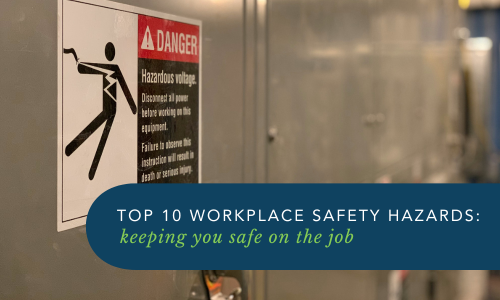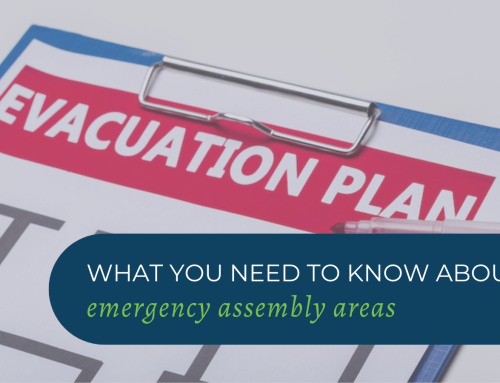Australia prides itself on its strong work ethic, but that drive shouldn’t come at the cost of safety! Every year, thousands of Australians experience workplace injuries and illnesses. By understanding the most common safety hazards and taking preventative measures, employers and employees alike can create a safer and healthier work environment.
Here’s a breakdown of the top 10 workplace safety hazards in Australia and how to avoid them:
- Slips, Trips, and Falls:
These seemingly minor incidents can lead to serious injuries. Common culprits include wet floors, uneven surfaces, poor lighting, and trailing cables.
- Prevention: Maintain clean and dry surfaces, ensure proper lighting, remove clutter, and use slip-resistant mats. Regularly inspect walkways and report any uneven surfaces or damaged flooring.
- Manual Handling and Lifting Injuries:
Improper lifting techniques or exceeding weight limits can cause muscle strains, back injuries, and other musculoskeletal disorders.
- Prevention: Train employees on safe lifting practices, such as bending at the knees and keeping the back straight. Encourage the use of mechanical lifting aids for heavy objects and implement weight limits for manual handling.
- Machinery and Equipment Hazards:
Unguarded machinery, faulty equipment, and lack of proper training can lead to serious accidents.
- Prevention: Ensure all machinery has appropriate guards and safety features. Conduct regular maintenance checks and inspections. Provide comprehensive training on safe operation and maintenance procedures for all machinery used by employees.
- Electrical Hazards:
Faulty wiring, damaged electrical cords, and improper use of electrical equipment can cause shocks, burns, and even electrocution.
- Prevention: Perform regular safety inspections and maintenance on electrical devices. Use equipment with proper safety ratings, that are tested and tagged and make sure Residual-Current Devices (RCDs) are correctly installed where necessary. Train employees on safe electrical work practices and discourage any electrical work they are not qualified for.
- Working at Heights:
Falls from heights are a major cause of workplace fatalities and serious injuries.
- Prevention: Provide proper fall protection equipment like harnesses and lifelines. Ensure work areas at heights have secure guardrails and toe boards. Train employees on safe work practices for working at heights and conduct regular inspections of fall protection equipment.
- Hazardous Substances and Chemicals:
Exposure to hazardous chemicals can cause a range of health problems, depending on the substance.
- Prevention: Implement a hazardous materials information system (HMIS) to identify and label chemicals. Ensure proper storage and handling procedures are in place. Provide employees with personal protective equipment (PPE) appropriate for the chemicals they work with. Train employees on safe handling procedures and the importance of proper PPE use.
- Noise Exposure and Hearing Loss:
Continuous exposure to loud noises can lead to permanent hearing loss.
- Prevention: Conduct noise level assessments in the workplace. Implement engineering controls like noise enclosures or barriers. Provide hearing protection equipment to employees exposed to high noise levels.
- Working in Confined Spaces:
Confined spaces can present a number of hazards, including oxygen deficiency, toxic fumes, and risk of entrapment.
- Prevention: Identify all confined spaces in the workplace. Develop and implement a safe work permit system for confined space entry. Train employees who may need to enter confined spaces on safe entry procedures, ventilation requirements, and emergency evacuation plans.
- Fatigue and Stress-Related Health Issues:
Long working hours, demanding workloads, and poor work-life balance can contribute to fatigue and stress, which can impact employee safety and well-being.
- Prevention: Promote a healthy work-life balance with flexible working arrangements where possible. Implement fatigue management strategies like rostering practices that minimise extended shifts. Provide resources and support programs to help employees manage stress.
- Workplace Bullying and Violence:
A hostile work environment can have a negative impact on employee mental health and safety.
- Prevention: Develop and implement a clear anti-bullying and violence policy. Foster a culture of open communication and encourage employees to report incidents of bullying or violence. Provide training for employees and managers on recognising and addressing bullying and violence.
Remember:
Safety is a shared responsibility. Employers have a legal obligation to provide a safe workplace, while employees have a responsibility to work safely and follow safety procedures. By working together and being proactive, everyone can contribute to a safer and healthier work environment.
Additional Resources:
- Safe Work Australia: https://www.safeworkaustralia.gov.au/
This blog provides a starting point for understanding common workplace safety hazards. It’s important to consult with relevant safety resources and regulations specific to your industry for a more comprehensive approach to workplace safety.
For more on workplace safety and emergency preparedness, head to our Workplace Emergency Management homepage.
GET IN TOUCH
Are you ready for peace of mind that your workforce is as safe and prepared as possible?
With a dedicated team of staff ready to help you meet compliance requirements and improve the overall safety of your workplace, all you need to do is get in touch.
Request your free audit today!



